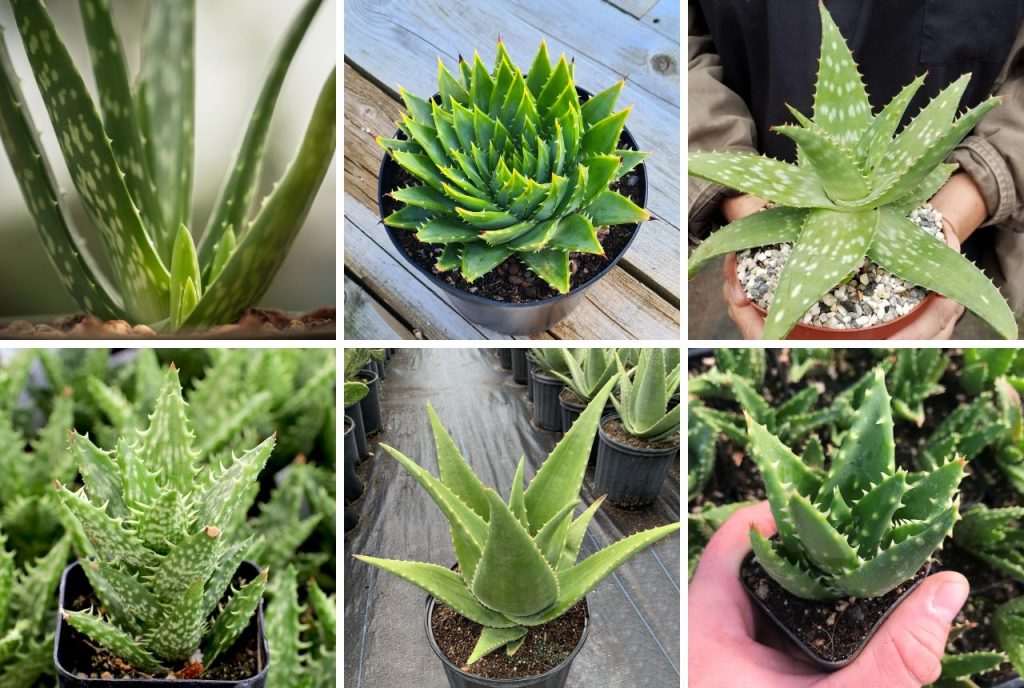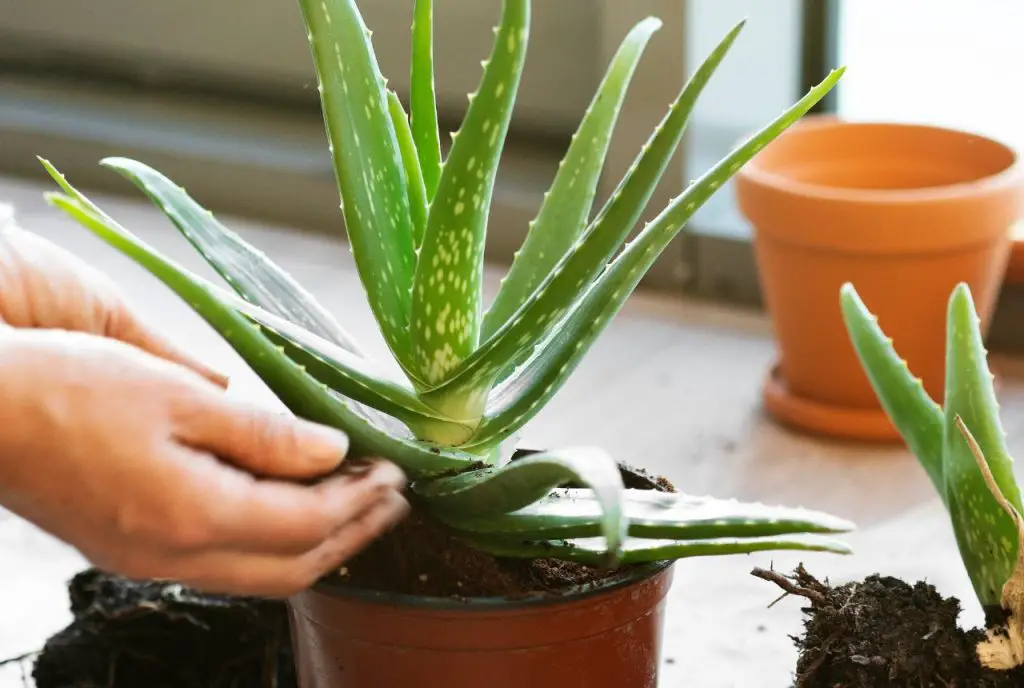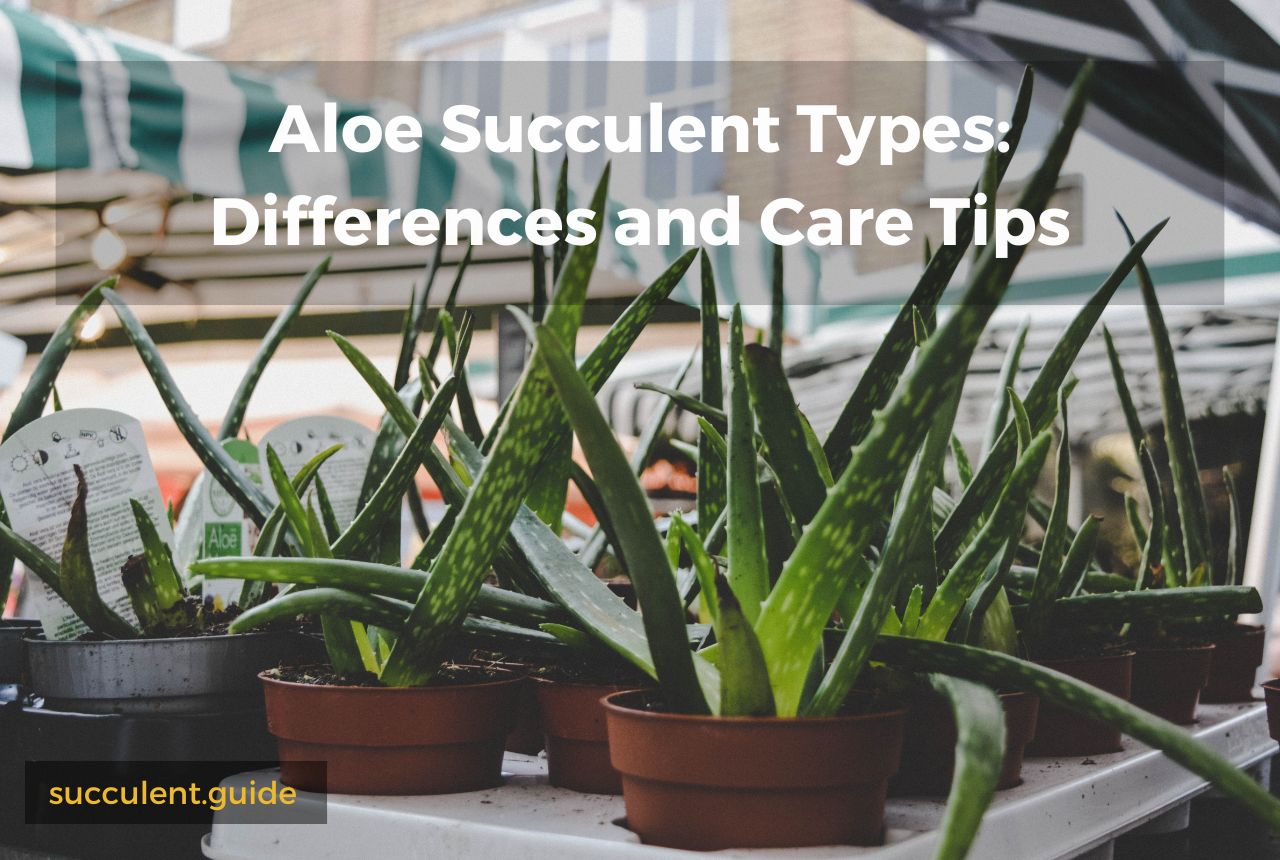My husband and I built this website with more than 900 succulent species data. However, some of them are not really popular, and some of them are opposite.
In my opinion, there are about 10 genus that can be marked as “must-have” for everyone. And Aloe is one of them.
In this article, I am sharing +30 different types of Aloe succulent plants, highlighting their differences, and providing some basic tips on how to care for them.
+30 Different Types of Aloe Plants With Names and Pictures
I am not a plant scientist, but based on Wikipedia data, there are over 550 different species of Aloe out there. They are a diverse group of plants that vary in size, shape, and color.
Some of the most Aloe succulents that I know include Aloe vera, Aloe aristata, Aloe juvenna, Aloe brevifolia, Aloe humilis, Aloe polyphylla, and Aloe saponaria.
Each species has its unique characteristics, making them a popular choice for gardeners and collectors alike.
Aloe Vera
Aloe Vera is perhaps the most widely known Aloe succulent. This type of Aloe is revered for its numerous health benefits. It is also the most common type of Aloe and one of the easiest to care for.
Aloe Polyphylla
Aloe Polyphylla, also known as Spiral Aloe, is another popular Aloe succulent. It’s so named because its leaves spiral in a hypnotic pattern. While it is an elegant plant, it is also a challenging one to grow.
This Aloe succulent is native to Lesotho, a country in Southern Africa. Aloe Polyphylla requires intense sunlight to develop its beautiful spiral pattern.
Additionally, this plant is sensitive to overwatering, and its potting soil must be well-draining.

Aloe Maculata
Aloe Maculata (Soap Aloe) is a large and impressive Aloe succulent. It has a rosette of green leaves with white spots and can grow up to 24 inches tall.
Aloe Juvenna
Aloe Juvenna (Tiger Tooth Aloe), is a small and unique Aloe succulent. It has green leaves with white spots, and when it blooms, it produces vibrant reddish-orange flowers.
Aloe Juvenna is a relatively low-maintenance plant that needs only occasional watering.
Aloe Nobilis
Aloe Nobilis (Gold Tooth Aloe) has a rosette of green leaves with orange tips and distinctive “teeth” along the edges. This plant is native to South Africa and enjoys full to partial sunlight.
Aloe Striata
Also known as Coral Aloe, this succulent features a rosette of gray-green leaves with small spines along the margins.
In the summer, it produces tall spikes of coral-colored flowers.
Aloe Aristata
A clump-forming succulent with triangular leaves that are green with white spots.
This aloe may produces beautiful white flowers in the summer.
Aloe Plicatilis
This succulent, commonly known as fan aloe, has fan-shaped leaves that grow in a densely packed arrangement.
Aloe aculeata
Also known as Red Hot Poker Aloe, this succulent boasts a rosette of fleshy, blue-green leaves, with spiky edges and reddish-orange flowers that bloom in winter and spring.
Aloe mitriformis
A spiralling, clumping aloe with growth rings on the stems. It has flat, incurved leaves and can bear orange-red flowers on stems up to 23 inches tall.
Aloe ferox
Also known as Cape Aloe, this tree-like succulent grows up to 10 feet tall and features bright green leaves with small white spines. It produces tall spikes of orange flowers in the winter and spring.
Aloe ‘Pink Blush’
This hybrid plant is a cross between Aloe maculata and Aloe striata. It features broad, light green leaves with pink tips and produces tall spikes of pink flowers in the summer.
Aloe ‘Hercules’
A tall and robust succulent, this plant can reach up to 6 feet tall and produces clusters of blue-green leaves with small white spines. Its beautiful red and orange flowers grow on a tall stem that can reach up to 8 feet tall.
Aloe spectabilis
This succulent features blue-gray leaves with white spots and sharp marginal spines. It produces tall spikes of orange-red flowers in the winter and spring.
Aloe Erinacea
This succulent grows in a rosette form and features green leaves with white spots. The small, white tubular flowers are borne on a tall stem that can grow up to 2 feet tall.
Overall, Aloe succulents are incredibly diverse and each species or hybrid has unique characteristics.
Since there are so many species, I will only list them below.
Care Tips for Aloe Succulents
While each Aloe plant has its unique care requirements, general guidelines apply to all Aloe succulents. Here are some tips to take care of your Aloe succulent plants:

1. Ensure Proper Drainage
Aloe succulents prefer well-draining soil. Using a well-draining potting mix is crucial and not to water the plant too frequently. Overwatering can lead to root rot, which can ultimately cause the plant to die.
2. Water Sparingly
Aloe succulents store water in their leaves, requiring infrequent watering. Additionally, overwatering can lead to root rot, which can be fatal to the plant. Aloe succulents typically require weekly watering in the summer months and bi-weekly watering in the winter.
3. Provide the Right Amount of Sunlight
Most Aloe succulents prefer full or partial sunlight. Ensure they receive adequate sunlight, which will impact their growth, color, and overall health.
4. Watch Out for Pests
While Aloe succulents are generally low-maintenance plants, they are susceptible to pests, including aphids, mealybugs, and scale insects. Be vigilant and quickly identify and treat infestations to prevent the spread of pests.
My Last Word
As I mentioned earlier, Aloe is one of the “must-have” succulent plants in your garden – or indoors. The caring required for this genus is categorized under “low-maintenance” plants.
You may notice your aloe won’t grow at the first 2-3 months after you repot them but that is the time for the root to develop. Do not take the plant out of its soil just to check it’s root.
Leave them alone at least 3 months and you will see how fast they grow.
Good luck,
Linh

